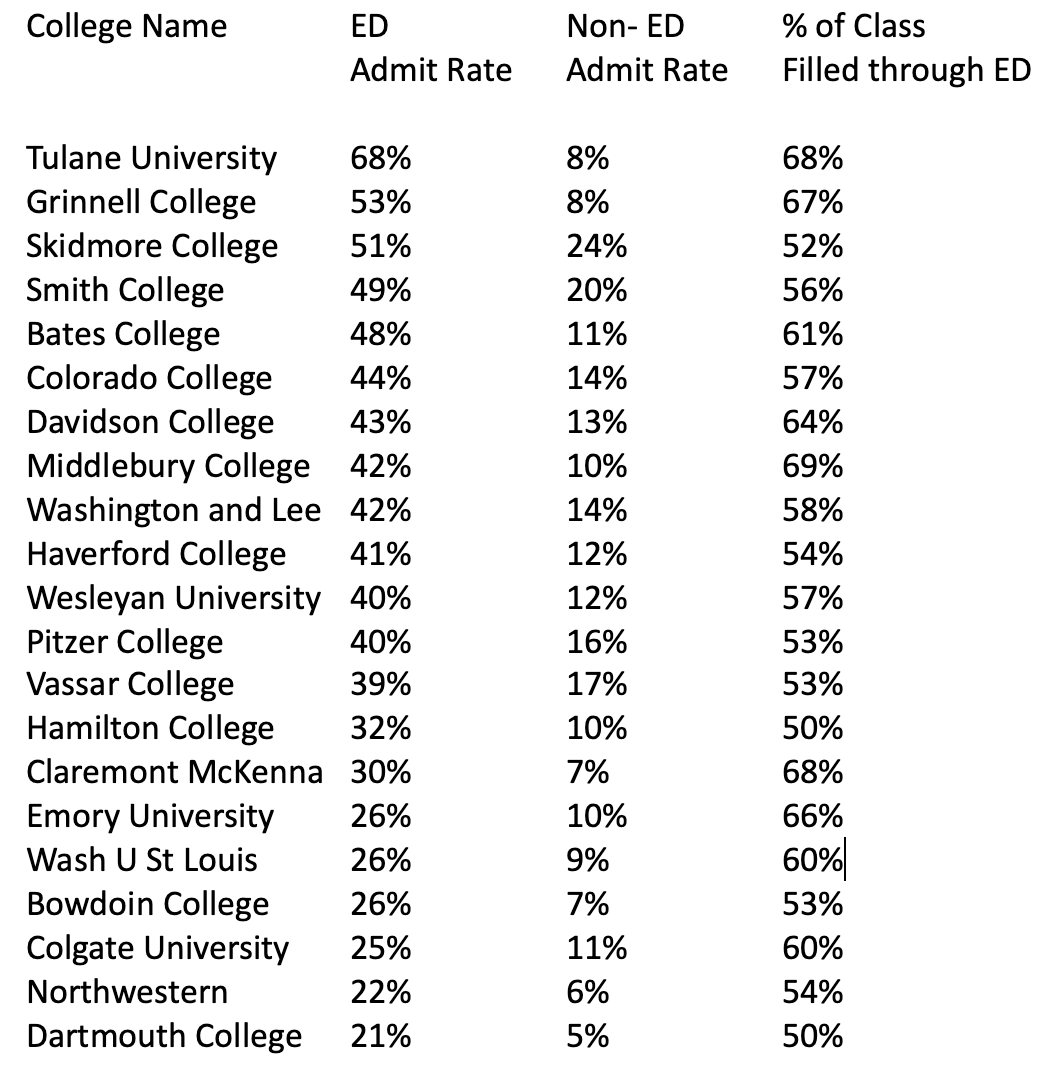Of all the ways you can prove your interest, one stands head and shoulders above all the others: applying through Early Decision, commonly referred to as ED. Doing so, you give up your freedom to decide among offers of admission from many colleges in exchange for getting stronger consideration from that college. And the difference in acceptance rate for ED vs. non-ED can be quite significant.
Have you heard the college admission term “Demonstrated Interest?” It refers to steps taken by students to prove their interest in attending a particular college. It includes activities like visiting campuses, requesting information online, following colleges on social media, and visiting information booths when attending college fairs. Not all colleges consider demonstrated interest, but for those that do these activities can provide a big boost. Of all the ways you can prove your interest, one stands head and shoulders above all the others: applying through Early Decision, commonly referred to as ED. Simply stated, your decision to apply to a college through ED means that, if you are accepted you will attend—no questions asked. The only exception is when another college offers you a better financial aid package. Even then, the college that has accepted you through its ED program has the option of matching or beating that offer.
There is no doubt that applying ED is a bold move, because it forces your hand and locks you in. Decision made. Case closed. Once you apply to a college through ED, you give up your freedom to decide among offers of admission from many colleges in exchange for getting stronger consideration from that college. And the difference in acceptance rate for ED vs. non-ED can be quite significant. Indeed, at many well-known colleges, the ED acceptance rate is more than double the non-ED acceptance rate. Also, some colleges fill half of their seats, or more, for their incoming class through ED acceptances.
Also consider the significant fact that ED decisions come out months earlier than regular decisions. Typically, ED decisions come out in December, whereas most regular admission decisions come out in March. Knowing where you are going to college as early as December of your senior year will take a lot of pressure off you. This is not to say that you should engage in the 12th grade ritual known as senior slump, because admission decisions can be (and have been) rescinded. However, it does mean that you will not have to endure three additional months of uncertainty not knowing where you will live come September.
We have compiled a list of 21 colleges where the ED admit rate is at least two times greater than the non-ED admit rate and, additionally, where the portion of the entire class accepted under the ED program is 50% or greater. It is likely that you will find some of this data to be shocking. We hope you also find it useful.


